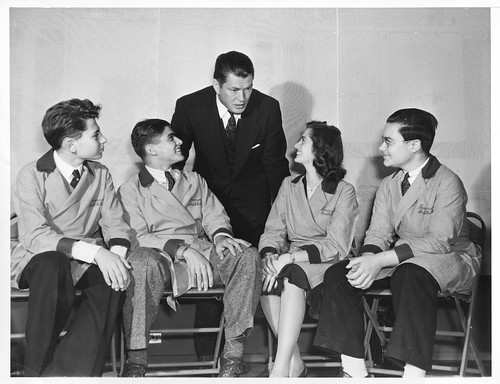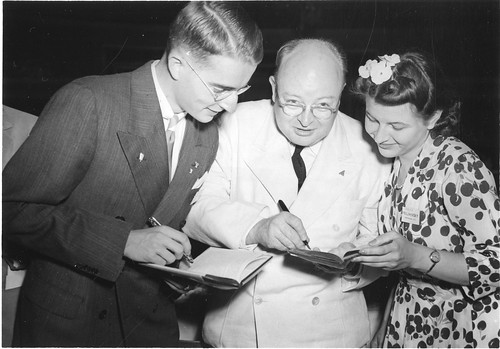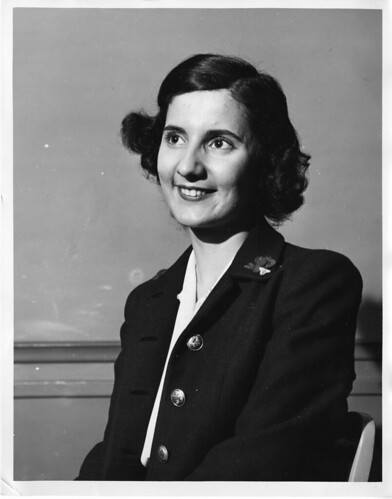You know the old cliché—“A picture is worth a thousand words.” But is it true in every case? A simple portrait from 60 years ago may give some clues to period hairstyle and dress, but none to where the photo was taken or why the person was noteworthy. Sources now available on the internet, such as the Historic newspaper database, Proquest, and even YouTube—give Smithsonian Institution Archives researchers quick access to information that will illuminate and enrich the photos.
The following three photos from the Science Service records held by the Smithsonian Institution Archives illustrate the early history of The Science Service Science Talent Search.
The Science Service Talent Search was a continuation of Westinghouse’s Science Award program for promising high school students. Open to both boys and girls, the Talent Search offered awards in proportion to the numbers of each sex entering the contest. Two top winners—one boy and one girl—each received a $2,400 scholarship from Westinghouse. Above, world heavyweight boxing champion Gene Tunney is pictured chatting up four Science Talent Search competitors. He became active in youth work after his retirement from the ring, but was perhaps best known for his famous fight with Jack Dempsey. YouTube gives us an opportunity to watch highlights of Tunney’s famous “Long Count match” with Jack Dempsey:
~~~
Marina Prajmovsky, 1942 winner, was remembered in a 2003 NY Times article:
"Miss Prajmovsky, the first winner, who later married and became Dr. Marina Meyers, died in 1974 after a career as an ophthalmologist. But there is still a record of her elation at the turn her life took.
'In high school there was little room to work and only the crudest equipment, but here with the luxury of a lab of my own and almost anything I want to work with I feel my own limitations,' she wrote from Harvard University, two years after she won. 'There just isn't any excuse for what I do wrong or leave undone. But as discouraging as this is now and then, it's such a wonderful feeling to begin to understand a little bit of something that seemed just about impenetrable only a little while ago.'"
New York Times (1923-Current File) ; Mar. 9, 2003; Proquest Historical Newspapers The New York Times (1851-2006) pg. LII
~~~
1944 Science Talent Search winner Anne Hagopian’s cosmopolitan background is noted in her wedding announcement:
“Troth Announced of Anne Hagopian"
“Miss Hagopian was graduated from the Brearly School here and is attending Radcliffe College. A granddaughter of the Late Hovhannes Hagopian Bey of the Ministry of the Interior of Eggypt, and of M. and Mme. Gaston Perrot-Revilliod of Geneva, she is a grandniece of the late Gustav Ador, former president of Switzerland…”
New York Times: Nov. 24, 1946 (1923-Current file); Proquest Historical Newspapers The New York Times (1851-2006) pg. 73
~~~
The Science Talent Search, now sponsored by Intel, is still held by the SS’s successor, the Society for Science and the Public. Here’s a link to the current winners.
Produced by the Smithsonian Institution Archives. For copyright questions, please see the Terms of Use.




Leave a Comment